UK heatwave: What is a drought and will it affect me?
- Published
- comments
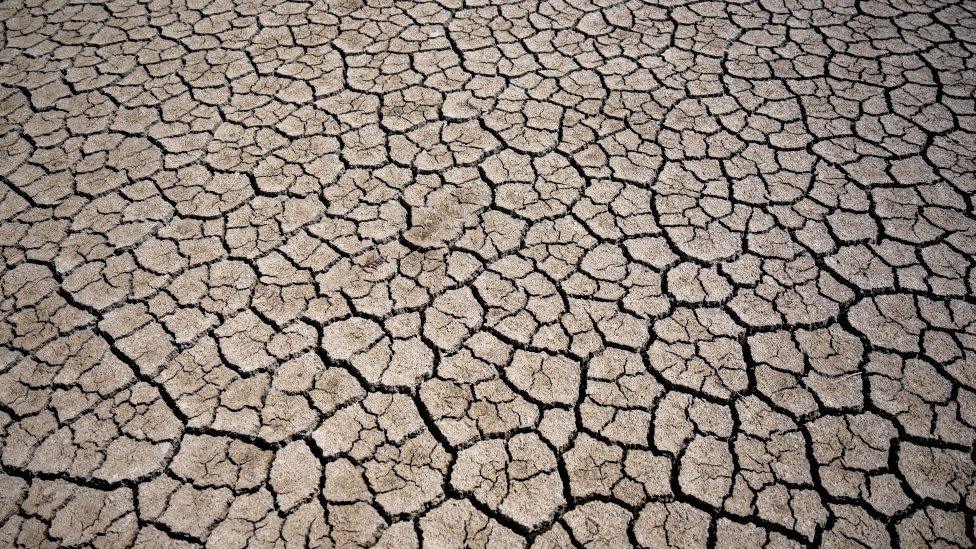
A drought describes a period of time when there is a lack of water
The government officially declared that eight areas of southern, central and eastern England are now in drought.
It includes Devon and Cornwall, Kent, London and the East Midlands and comes following concerns about extreme heat and dry weather this summer.
The UK has seen a sweltering summer with two heatwaves, record temperatures and less rainfall then usual.
The move is expected to trigger stricter controls on how much water people can use use across the UK.
A number of water companies which have introduced hosepipe bans in recent weeks which means they can introduce rules to protect water supplies.
Temperatures are forecast to hit 37C in some parts of the UK over the next few days, and an amber warning for extreme heat is currently in place.
Millions are expected to be impacted by the drought, but the Environment Agency said essential water supplies were safe.
Heatwave dries up source of River Thames during drought in England
Devon and Cornwall
Solent and South Downs
Kent and South London
Hertfordshire and North London
East Anglia
Thames
Lincolnshire and Northamptonshire
East Midlands
What is a drought?
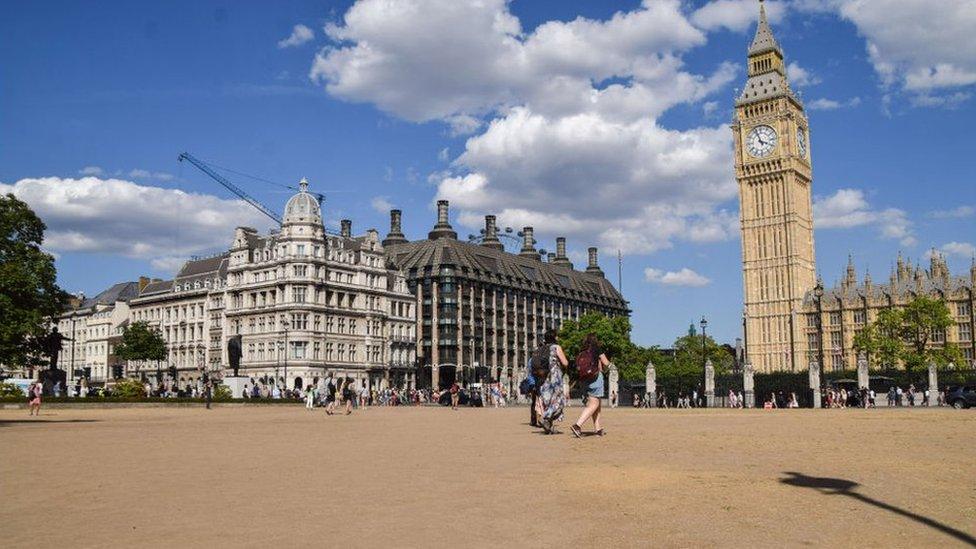
Parliament Square in London is normally green but the long period of hot weather has dried the grass
A drought is a time when there is less water available than usually expected, but there are different types of drought.
There could be for example an agricultural drought, which means there is not enough water to grow a crop.
The decision on whether to declare a drought in England is taken by the Environment Agency, which coordinates the response with water companies.
The agency doesn't use a single definition of a drought - it takes into account different factors like the impact on people and how long the drought will last.
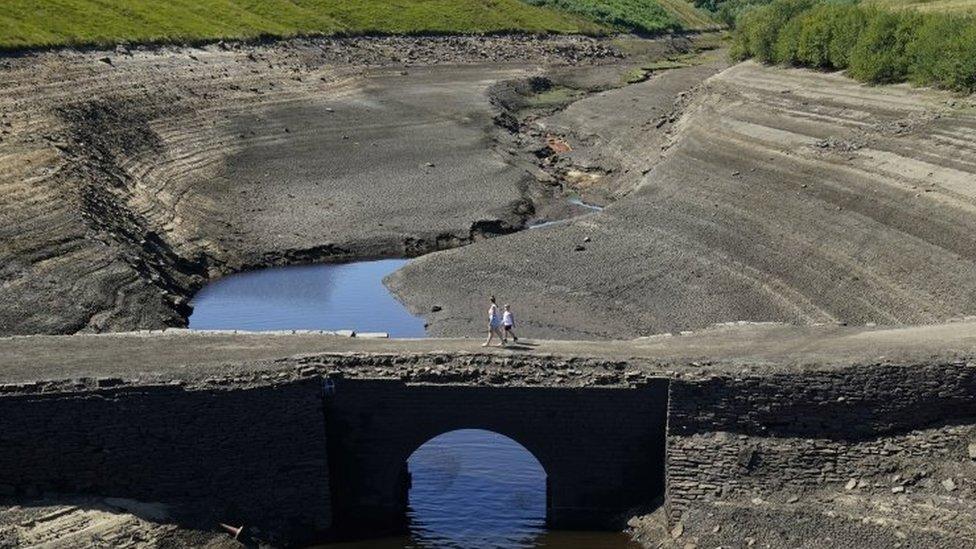
At Baitings Reservoir in Ripponden, West Yorkshire water levels are significantly low, with total stock of water in England's reservoirs at the end of July at 65 percent of its normal capacity
It will also consider how the long dry spell is affecting food production, water supplies and the environment, and how much rivers and streams are shrinking.
Rivers are running at very low levels in much of southern England and Wales, including the River Yscir, Colne and Wye.
Reservoirs are also running empty, with measures at the end of July showing that reservoirs were at their lowest levels in England and Wales since records began in 1990.
What will the impact of a drought be?
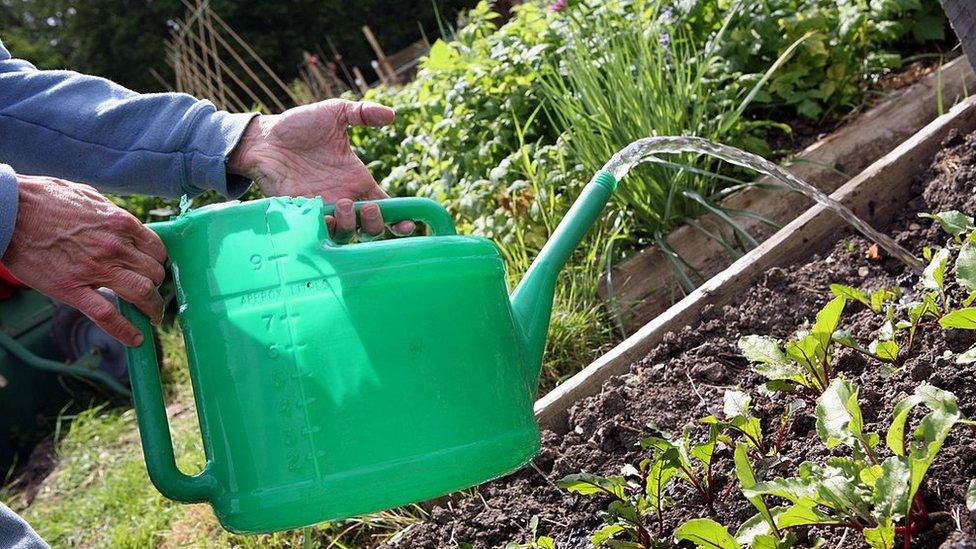
If you live in one of the areas of England affected by drought, the most obvious first impact is likely to be a hosepipe ban.
A hosepipe ban may stop the use of hoses to water gardens, fill paddling pools or clean cars.
Each water company has a drought plan - as a drought gets worse, they may take more serious actions to help preserve water.
If conditions become extreme, companies could ban non-essential water use, which might include watering plants with a watering can or cleaning windows.
It's possible that water rationing or cuts to water supply could be introduced - but most water companies consider this extreme and say they plan to never reach this level.
An important part of declaring a drought is sending a message that we should do our best to use less water.
What other impacts has the weather had?
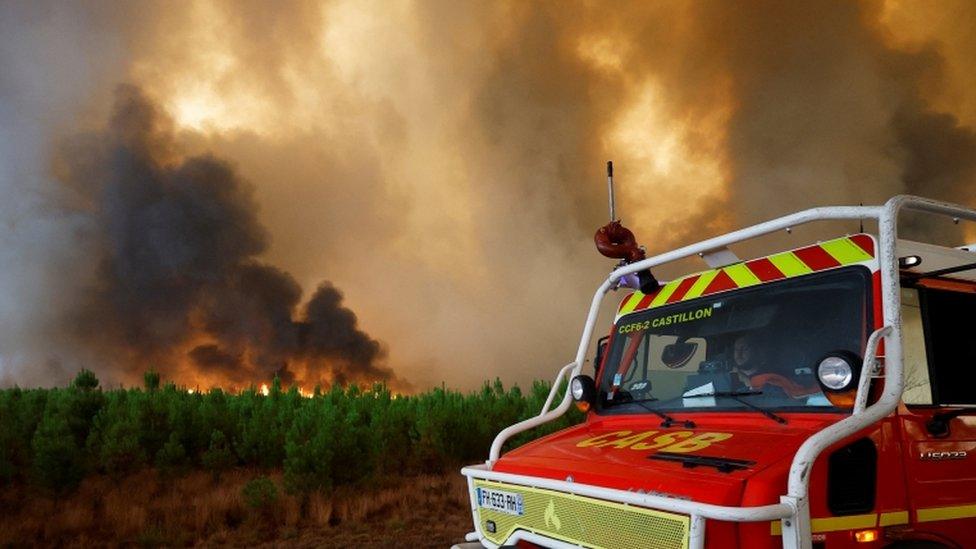
Several European countries including France have seen wildfires this year
The heatwave has led to some concerns about wildfires. These are uncontrolled fires, which often start in rural areas like forests or grasslands. They can happen naturally or can be started as a result of human activity.
Several European countries have been experiencing wildfires this summer, including France, Greece, Spain and Italy.
There have also been fires in California in America.
Many countries around the world have been experiencing heatwaves which can increase the risk of wildfires and how quickly they spread.
How do wildfires start?
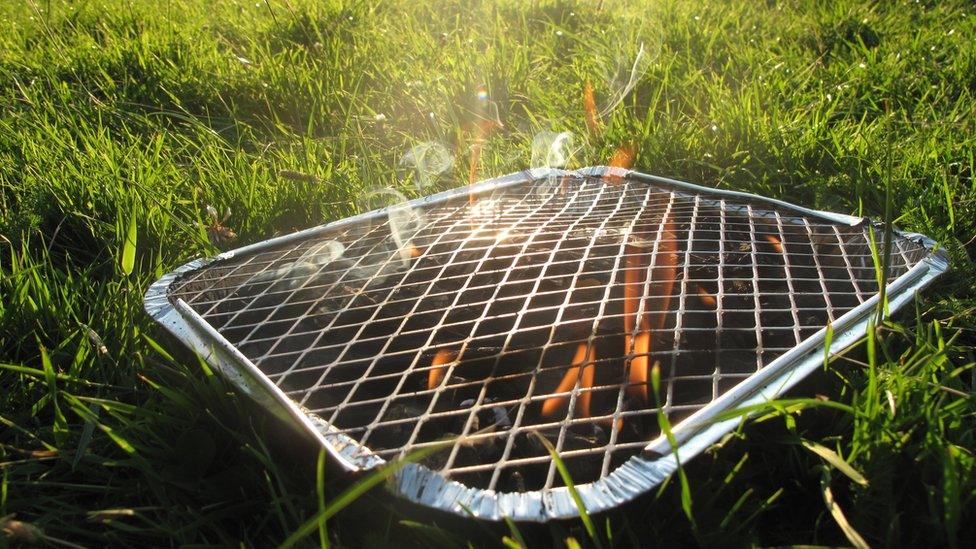
Throwaway barbecues are responsible for 4% of accidental wildfires, according to the Home Office
It's not known exactly how all the recent fires started, but most wildfires are caused by human activity such as campfires, barbecues and sometimes even deliberate fire-starting.
A number of supermarkets have said they'll stop selling disposable barbecues in their stores to limit the risk of fires starting and to protect open spaces.
The hotter, drier weather can cause fires sparked by portable barbecues like this to spread more quickly.
Experts have said heatwaves are becoming stronger and more intense as the planet heats up due to human-caused climate change.
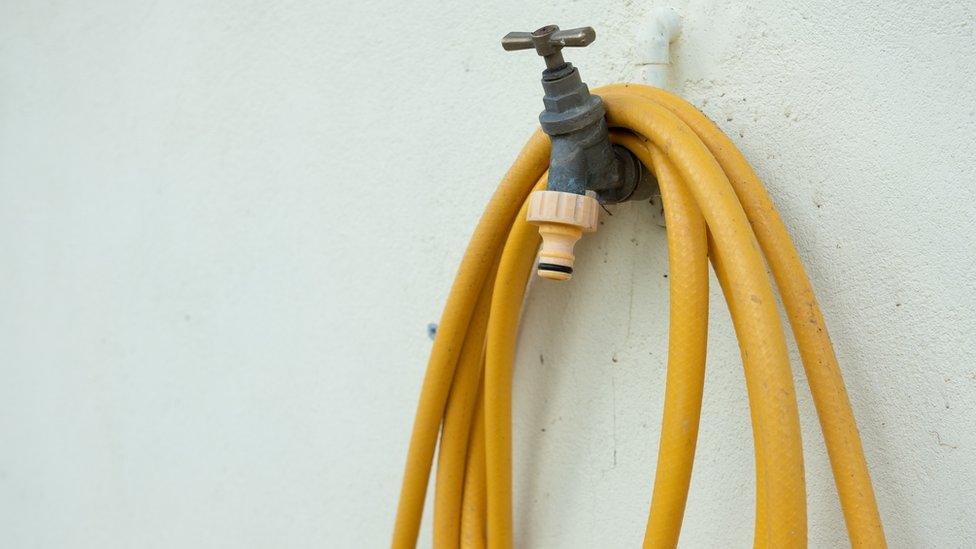
Water companies in some parts of the UK have introduced hosepipe bans because of the weather.
South East Water's ban for Kent and Sussex begins today, following Southern Water's for Hampshire and the Isle of Wight last Friday, whilst the Isle of Man has had a ban in place since July.
The restrictions on water use have been bought in in some areas after a lack of rainfall and extreme temperatures.
In the UK, our water comes from a number of different sources including rivers, lakes and reservoirs.
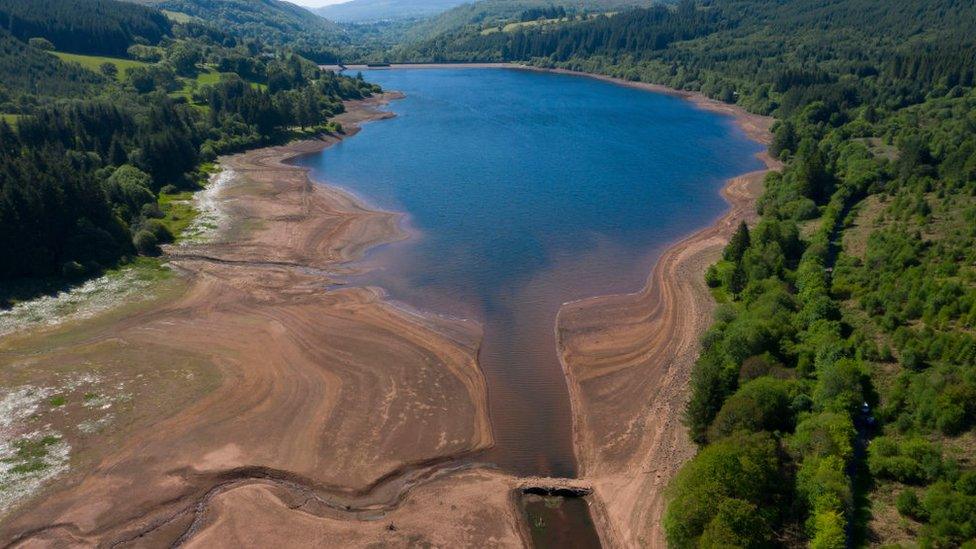
Some reservoirs in the UK have lower water levels at the moment
Reservoirs collect and store water during times of high rainfall and are usually formed by a dam built across a river.
These man-made lakes supply water to homes and business and are also used for hydropower or flood protection.
However, both rivers and lakes are at lower levels then usual in some parts of the UK - meaning there's less water to go round.
Hosepipe bans are one way for water companies to try and limit how much water people are using.
- Published9 September 2023
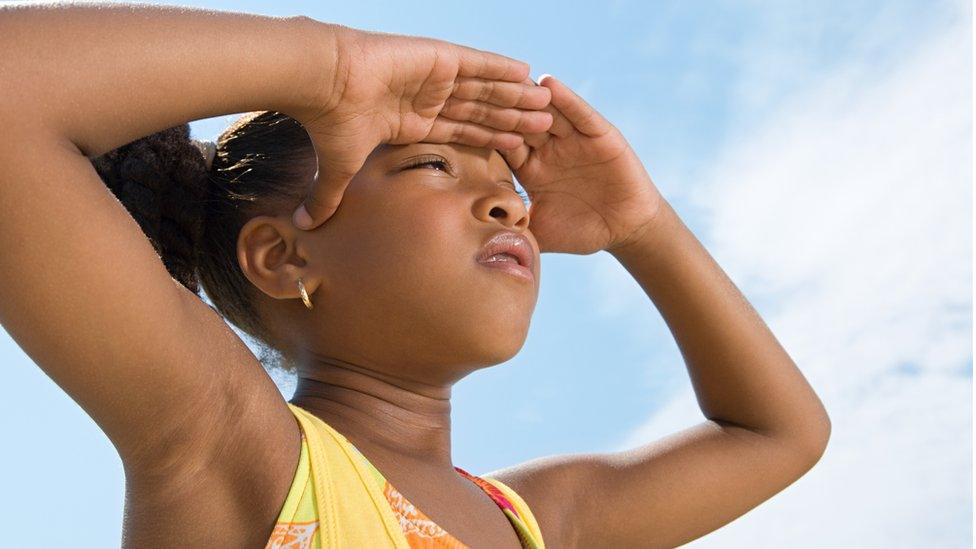
- Published11 August 2022
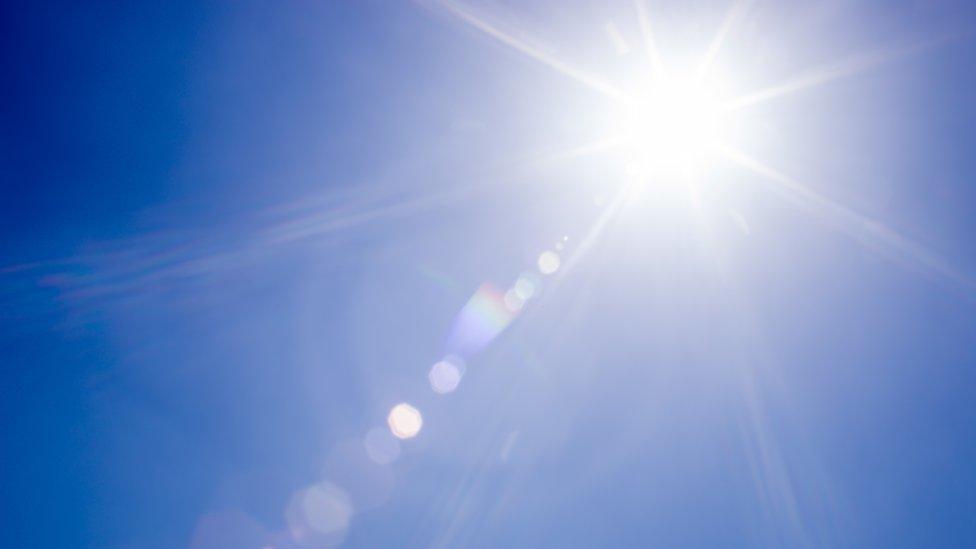
- Published5 April 2022

